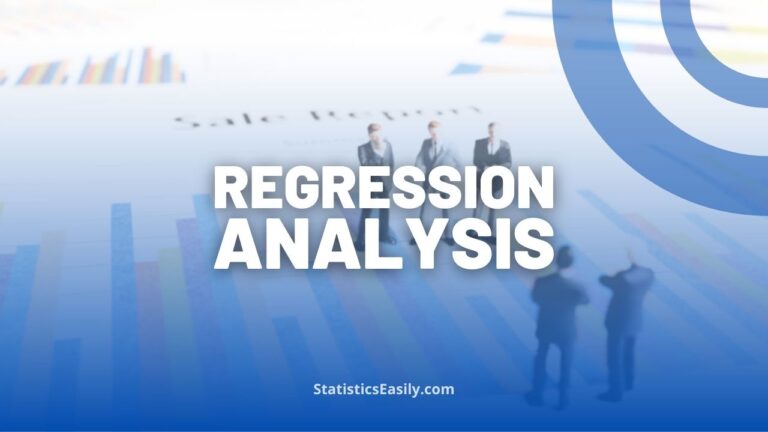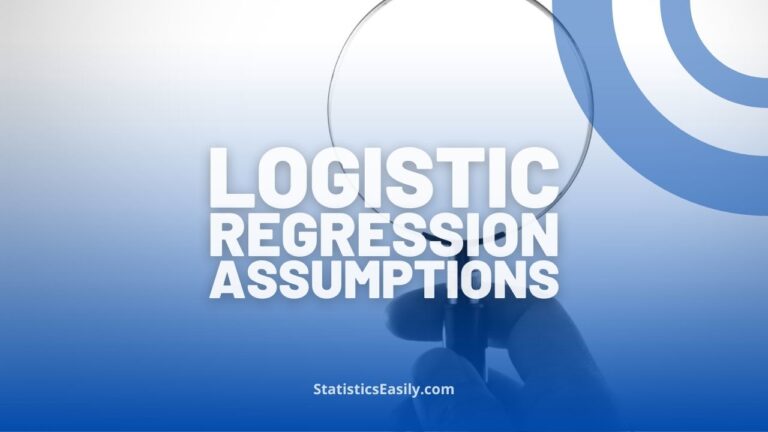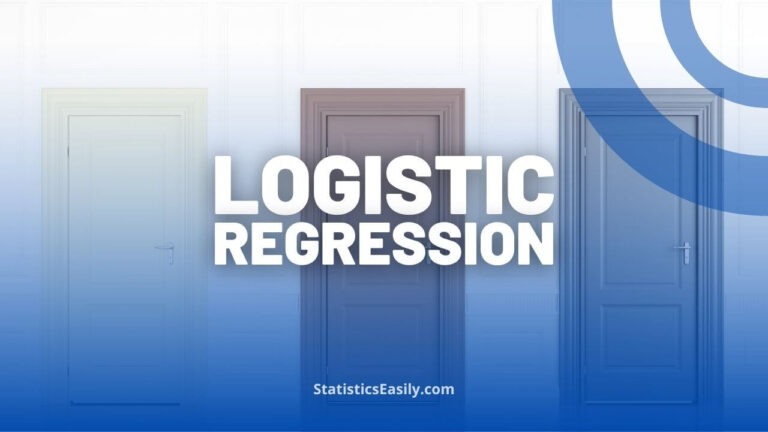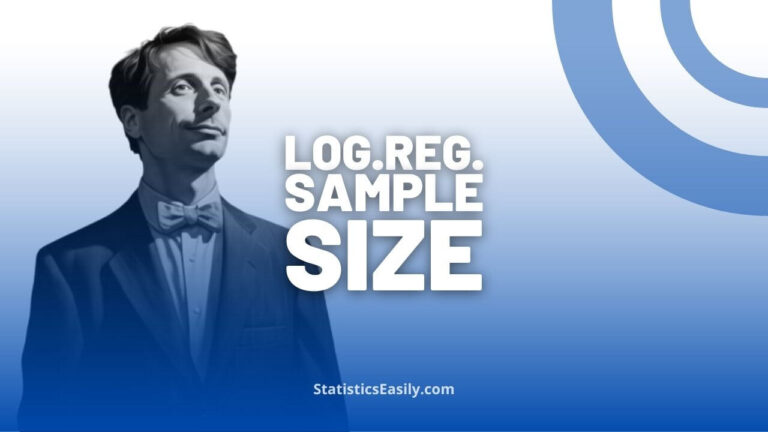Logistic Regression Scikit-Learn: A Comprehensive Guide for Data Scientists
You will learn logistic regression scikit learn techniques for predictive analytics in data science.
Introduction
Logistic regression is a pivotal technique in data science, especially for binary classification problems. This method estimates probabilities using a logistic function, which is crucial for predicting categorical outcomes. Its importance lies in its ability to provide clear insights into the relationships between categorical variables and one or more independent variables, making it indispensable for fields such as medicine, finance, and social sciences, where the outcome is binary.
Scikit-learn, a powerful Python library, plays a significant role in simplifying the implementation of logistic regression. It offers a user-friendly interface for data scientists to efficiently apply complex statistical models to real-world problems. The synergy between logistic regression and scikit-learn enhances predictive modeling, making its possibilities a cornerstone in data scientists’ toolkits. This combination not only democratizes advanced analytics by making them accessible but also ensures reproducibility and scalability in predictive modeling tasks.
In this guide, we will delve into the theoretical underpinnings of logistic regression, its practical applications, and how scikit-learn facilitates its implementation. Through hands-on examples and step-by-step tutorials, readers will gain a comprehensive understanding of logistic regression scikit learn techniques, empowering them to harness the full potential of this methodology in their data science projects.
Highlights
- Logistic regression transforms linear relationships into probabilities using a logistic function, which is essential for binary classification.
- Scikit-learn simplifies logistic regression, making advanced statistical modeling accessible and scalable for data scientists.
- Feature selection, normalization, and data splitting are vital preparatory steps for optimal logistic regression model performance.
- Scikit-learn supports logistic regression with tools for handling imbalanced datasets, multi-class classification, and regularization.
- Real-world logistic regression applications range from disease diagnosis in healthcare to credit risk assessment in finance.
Ad Title
Ad description. Lorem ipsum dolor sit amet, consectetur adipiscing elit.
Understanding Logistic Regression
Logistic regression stands at the forefront of statistical methodologies used in data science, especially when addressing binary classification challenges. This technique, grounded in robust mathematical principles, leverages the logistic function to transition from linear relationships to probabilities, offering a nuanced approach to predicting dichotomous outcomes. Its versatility is showcased in its wide-ranging applications across various sectors, from healthcare in predicting disease presence to finance in assessing credit risk, underscoring its fundamental role in binary decision-making processes.
The essence of logistic regression lies in its mathematical foundation, primarily hinged on the logistic function, also known as the sigmoid function. This S-shaped curve maps any real-valued number into a value between 0 and 1, making it exceptionally suitable for modeling probability distributions of binary outcomes. The logistic model thus estimates the probability that a given input belongs to a particular category, which is pivotal for classification tasks.
The logistic regression scikit learn techniques are instrumental, highlighting the synergy between the theoretical aspects of logistic regression and practical applications. Scikit-learn, a comprehensive Python library, democratizes access to advanced statistical tools, enabling data scientists to deploy logistic regression models with efficiency and precision. Through scikit-learn, logistic regression transcends theoretical confines, becoming an accessible and scalable tool for predictive modeling. This blend of theoretical rigor and practical applicability ensures that logistic regression, facilitated by scikit-learn, remains a cornerstone in the toolkit of modern data scientists.
Addressing binary classification, logistic regression excels in distinguishing between two possible outcomes, making it indispensable for scenarios requiring clear decision boundaries. Whether it’s determining if an email is spam or not, predicting patient diagnosis as positive or negative, or classifying financial transactions as fraudulent or legitimate, logistic regression provides a clear, probabilistic framework for decision-making. Its capacity to handle various input types and interpretability further augment its utility, making it a go-to method for binary classification tasks in data science.
Note: While this article focuses on binary logistic regression, it’s essential to acknowledge the existence of two other variants: multinomial and ordinal logistic regression. Multinomial logistic regression is used when the outcome variable has more than two categories that are not ordered, suitable for classifying instances into multiple classes. On the other hand, ordinal logistic regression applies when the outcome categories are ordered, providing a nuanced approach to modeling scenarios where the order of outcomes is significant. Despite these additional variants, our discussion will concentrate on binary logistic regression, given its widespread application and foundational role in logistic regression analysis.
Introduction to Scikit-learn
Scikit-learn is a Python data science ecosystem beacon renowned for its comprehensive array of tools that facilitate machine learning projects. This open-source library is prized for its robustness, offering a wide range of algorithms for classification, regression, clustering, and more, making it an indispensable asset for data scientists. Among its many offerings, scikit-learn provides an efficient and straightforward implementation of logistic regression, a cornerstone technique for binary classification tasks.
The advantages of utilizing scikit-learn for machine learning endeavors are manifold. Firstly, its ease of use is unparalleled; scikit-learn’s consistent API design allows for seamless integration and experimentation with different models, ensuring a smooth learning curve for newcomers and a streamlined workflow for seasoned practitioners. Furthermore, the efficiency of scikit-learn is evident in its performance, with algorithms optimized for speed and reliability, enabling data scientists to process large datasets with minimal overhead.
Community support is another pillar solidifying scikit-learn’s standing in data science. A vibrant and active community contributes to its continuous improvement, with a wealth of documentation, tutorials, and forums available to assist users in overcoming any challenges they might encounter. This collaborative environment fosters innovation and ensures that scikit-learn remains at the cutting edge of machine learning technology.
Scikit-learn shines by simplifying the model’s implementation in logistic regression, allowing data scientists to focus on the nuances of their analyses rather than the intricacies of algorithmic coding. By leveraging the logistic regression scikit learn functionality, practitioners can efficiently train models, perform predictions, and evaluate outcomes with just a few lines of code. With comprehensive documentation and community examples, this ease of model implementation empowers users to explore the depths of logistic regression, from basic binary classification to more complex scenarios involving multi-class categorization.
Preparing Your Data
In data science, the adage “garbage in, garbage out” couldn’t be more pertinent, especially when discussing the success of machine learning models. This truth underscores the paramount importance of meticulous data preparation. This foundational step directly influences the effectiveness and reliability of your logistic regression models. Within this context, the logistic regression scikit learn framework offers robust tools and methodologies to streamline this critical process, ensuring your data is optimally conditioned for predictive modeling tasks.
Data preparation involves several key steps, each designed to refine your dataset into a format compatible with logistic regression algorithms and reflective of the real-world phenomena you aim to model. The first of these steps is feature selection. In this process, you identify and retain only variables with significant predictive power, eliminating noise and reducing dimensionality. This enhances model performance and improves computational efficiency and model interpretability.
Following feature selection, normalization (or standardization) is applied to ensure that all numerical input variables have a similar scale. This step is crucial because logistic regression, like many other machine learning algorithms, can be sensitive to the scale of input features. Normalization helps to prevent variables with larger scales from dominating the model’s learning process, thereby ensuring a balanced contribution from all features.
The final preparatory step involves splitting the dataset into training and test sets. This practice allows for the effective evaluation of your model’s predictive performance. Typically, the dataset is divided so that a majority (e.g., 70-80%) is used for training the model. At the same time, the remainder is reserved for testing its generalization capability on unseen data. This division is critical for diagnosing and mitigating issues like overfitting, where the model performs exceptionally well on the training data but fails to generalize to new, unseen data.
Incorporating logistic regression scikit learn techniques into your data preparation workflow facilitates a seamless transition from raw data to actionable insights. Scikit-learn’s comprehensive suite of preprocessing tools, including functions for feature selection, normalization, and dataset splitting, empowers data scientists to prepare their data efficiently, laying a solid foundation for developing robust logistic regression models.
Adhering to these data preparation steps ensures your logistic regression models are built on a foundation of clean, relevant, and well-structured data. This maximizes the potential of logistic regression scikit-learn techniques and paves the way for meaningful, actionable insights to drive decision-making processes across various domains.
Implementing Logistic Regression with Scikit Learn
Implementing logistic regression using scikit-learn is a straightforward process that involves several key steps, from data preparation to model evaluation. This section provides a detailed, step-by-step tutorial on how to apply logistic regression scikit learn techniques, ensuring you can efficiently harness this powerful tool for your data science projects.
Download the dataset!
Step 1: Import Necessary Libraries
First, ensure that you have scikit-learn installed in your environment. Then, import the necessary libraries:
import pandas as pd from sklearn.model_selection import train_test_split from sklearn.preprocessing import StandardScaler from sklearn.linear_model import LogisticRegression from sklearn.metrics import classification_report, confusion_matrix
Step 2: Load and Prepare Your Data
Load your dataset and perform initial preprocessing, including feature selection and normalization. Assuming you’re using the provided dataset, here’s how you might start:
# Load the dataset
df = pd.read_csv('/path/to/logistic_regression_dataset.csv')
# Select features and target variable
X = df.drop('Is_Spam', axis=1)
y = df['Is_Spam']
# Split the data into training and test sets
X_train, X_test, y_train, y_test = train_test_split(X, y, test_size=0.2, random_state=42)
# Normalize the features
scaler = StandardScaler()
X_train_scaled = scaler.fit_transform(X_train)
X_test_scaled = scaler.transform(X_test)
Step 3: Initialize and Train the Logistic Regression Model
With scikit-learn, initializing and training the logistic regression model is accomplished with just a few lines of code:
# Initialize the model model = LogisticRegression() # Train the model model.fit(X_train_scaled, y_train)
Step 4: Make Predictions and Evaluate the Model
After training the model, use it to make predictions on the test set and evaluate its performance:
# Make predictions y_pred = model.predict(X_test_scaled) # Evaluate the model print(confusion_matrix(y_test, y_pred)) print(classification_report(y_test, y_pred))
Parameter Tuning
To achieve optimal performance, you may need to tune the model parameters. Scikit-learn’s ‘LogisticRegression’ class offers several parameters, such as ‘C’ for regularization strength and ‘solver’ for specifying the algorithm used in the optimization problem. Utilizing techniques like grid search or cross-validation can help identify the best parameters for your model:
from sklearn.model_selection import GridSearchCV
# Define parameter grid
param_grid = {'C': [0.01, 0.1, 1, 10, 100], 'solver': ['liblinear', 'saga']}
# Initialize the grid search model
grid_search = GridSearchCV(LogisticRegression(), param_grid, cv=5)
# Fit the grid search model
grid_search.fit(X_train_scaled, y_train)
# Print best parameters
print("Best parameters:", grid_search.best_params_)
Best Practices for Model Evaluation
- Use a hold-out or cross-validation set to estimate model performance on unseen data.
- Consider metrics beyond accuracy, such as precision, recall, and the AUC-ROC curve, to comprehensively understand your model’s performance, especially in imbalanced datasets.
By following these steps and leveraging the logistic regression scikit learn functionality, you can effectively implement and optimize logistic regression models for various binary classification tasks, driving insightful data-driven decisions in your domain.
Advanced Topics
This section delves into the sophisticated facets of logistic regression, such as handling imbalanced datasets, navigating the challenges of multi-class classification, and the nuanced application of regularization techniques. Scikit-learn, with its robust library, offers a comprehensive toolkit to address these advanced topics, ensuring data scientists can refine their models to achieve unparalleled accuracy and efficiency.
Handling Imbalanced Datasets
Imbalanced datasets pose a significant challenge in predictive modeling, where the occurrence of one class vastly outnumbers the other. This imbalance can skew the model’s performance, leading to misleadingly high accuracy rates. To counteract this imbalance, scikit-learn provides mechanisms such as class weights in logistic regression algorithms. By adjusting these weights, the model can compensate for the disproportionate representation of classes, ensuring a more balanced and fair evaluation of model performance.
Multi-Class Classification
Beyond binary outcomes, logistic regression in scikit-learn is adept at tackling multi-class classification problems. Utilizing strategies like the one-vs-rest (OvR) scheme, scikit-learn enables logistic regression models to differentiate between more than two classes, expanding the applicability of logistic regression to a broader array of datasets and research questions. This adaptability is crucial in natural language processing and image recognition, where categories extend beyond simple binaries.
Regularization Techniques
Regularization is pivotal in preventing overfitting, a common pitfall where the model performs well on training data but poorly on unseen data. Scikit-learn’s logistic regression implementation includes regularization parameters like L1 and L2 regularization. These techniques introduce a penalty term to the loss function, constraining the magnitude of model coefficients and thus discouraging overfitting. By fine-tuning these regularization parameters, data scientists can enhance model generalization, ensuring robust performance across diverse datasets.
Scikit-learn supports these advanced logistic regression techniques with comprehensive documentation and user-friendly code snippets. For instance, implementing multi-class classification with logistic regression can be as straightforward as adjusting the multi_class parameter within the LogisticRegression class:
from sklearn.linear_model import LogisticRegression # Initialize the logistic regression model with multi-class setting log_reg = LogisticRegression(multi_class='multinomial', solver='lbfgs')
Similarly, addressing imbalanced datasets might involve setting the class_weight parameter to ‘balanced’ to auto-adjust weights inversely proportional to class frequencies:
# Adjusting for imbalanced datasets log_reg_balanced = LogisticRegression(class_weight='balanced')
Through scikit-learn, these advanced logistic regression techniques become accessible and implementable, empowering data scientists to push the boundaries of predictive modeling and unlock deeper insights from their data. This exploration of advanced topics broadens the horizon of logistic regression applications. It underscores the versatility and power of logistic regression scikit learn techniques in navigating the complexities of modern data science challenges.
Real-World Applications
This section highlights the transformative impact of logistic regression models in healthcare, finance, and marketing, showcasing real-world applications that underscore the practicality and versatility of this statistical method.
Healthcare
In healthcare, logistic regression models have been pivotal in diagnosing diseases and predicting patient outcomes. By analyzing patient data, such as test results and demographic information, logistic regression helps identify the likelihood of diseases like diabetes, heart disease, or cancer. For instance, a logistic regression model could predict the probability of a patient having a heart attack based on risk factors like cholesterol levels, age, and blood pressure. This predictive capability enables healthcare providers to implement preventative measures, tailor treatments, and allocate resources more effectively, ultimately saving lives and improving the quality of care.
Finance
The financial sector leverages logistic regression to assess credit risk, detect fraudulent transactions, and optimize investment strategies. Credit scoring models often employ logistic regression to predict the probability of a borrower defaulting on a loan based on historical data and individual financial indicators. Similarly, logistic regression models are adept at identifying patterns indicative of fraudulent activity within transaction data, enhancing security measures, and minimizing financial losses. These applications not only bolster institutions’ financial stability but also protect consumers from potential fraud and financial distress.
Marketing
In marketing, logistic regression models are invaluable for customer segmentation, targeting, and campaign optimization. By analyzing customer behavior, purchase history, and demographic information, logistic regression helps predict the likelihood of a customer responding to a particular marketing campaign or purchasing a product. This insight allows marketers to tailor their strategies to specific customer segments, maximizing engagement, conversion rates, and return on investment. The ability to predict customer preferences and behaviors with logistic regression models drives more personalized and effective marketing efforts, fostering brand loyalty and driving sales growth.
The integration of logistic regression Scikit Learn techniques in these sectors demonstrates the profound impact of data-driven decision-making. By harnessing the predictive power of logistic regression, industries can uncover insights hidden within their data, enabling more informed and strategic decisions that drive efficiency, innovation, and competitive advantage. The real-world applications of logistic regression are a testament to its versatility and efficacy, making it an indispensable tool in modern data science.
Ad Title
Ad description. Lorem ipsum dolor sit amet, consectetur adipiscing elit.
Conclusion
In the journey through the realms of data science, we’ve explored the profound utility and versatility of logistic regression scikit learn techniques. This comprehensive guide has illuminated the theory behind logistic regression, its practical applications within the Python ecosystem through scikit-learn, and its significant impact across various sectors.
Logistic regression, a cornerstone in statistical methodologies, offers a nuanced approach to binary classification tasks. Its ability to model the probability of categorical outcomes based on one or more independent variables makes it indispensable across diverse fields such as healthcare, finance, and marketing. The logistic function, with its S-shaped curve, serves as the mathematical foundation, enabling the estimation of probabilities in an interpretable and actionable manner.
Scikit-learn, a beacon within the Python data science ecosystem, enhances the implementation of logistic regression, making sophisticated statistical modeling accessible to a broader audience. Its comprehensive suite of tools simplifies the application of logistic regression models. It ensures scalability and reproducibility, critical aspects in predictive modeling tasks.
From preparing your data to implementing logistic regression models and optimizing their performance through parameter tuning and evaluation, the logistic regression scikit-learn framework provides a robust platform for data scientists to experiment and innovate. Exploring advanced topics like handling imbalanced datasets, multi-class classification, and regularization techniques further exemplifies the depth and breadth of logistic regression applications.
The real-world applications of logistic regression underscore its pivotal role in informing decision-making and shaping strategies across industries. Whether it’s diagnosing diseases, assessing credit risk, or optimizing marketing campaigns, logistic regression models have demonstrated their capacity to drive insights and actions that are both impactful and transformative.
Recommended Articles
Dive deeper into data science with our curated selection of articles. Explore more insights and techniques to elevate your data analysis journey.
- Sample Size in Logistic Regression: A Simple Binary Approach
- How to Report Results of Simple Binary Logistic Regression
- What Are The Logistic Regression Assumptions?
- What Are The 3 Types of Logistic Regression?
Frequently Asked Questions (FAQs)
Q1: What is logistic regression in Sklearn? Logistic regression in Sklearn is a statistical method utilized for binary classification tasks, enabling the prediction of categorical outcomes based on one or more independent variables using a logistic function.
Q2: How to use logistic regression in Python? Using logistic regression in Python typically involves importing the necessary libraries from Scikit Learn, preparing your data (including feature selection and normalization), initializing the logistic regression model, training the model with your data, making predictions, and evaluating the model’s performance.
Q3: What is the difference between linear regression and logistic regression in Sklearn? The primary difference lies in their application: linear regression is used for predicting continuous outcomes, whereas logistic regression is used for binary outcomes, providing probabilities of class memberships.
Q4: What is the logistic regression score function? The logistic regression score function in Sklearn evaluates the model’s accuracy by comparing the predicted outcomes against the actual outcomes, providing a measure of the model’s performance.
Q5: How do I choose the correct parameters for my logistic regression model in Scikit Learn? Selecting the correct parameters involves parameter tuning techniques like grid search or cross-validation, focusing on adjustments such as the regularization strength (C) and the solver for the optimization problem.
Q6: Can logistic regression handle multi-class classification problems? Logistic regression can be extended to handle multi-class problems using strategies like one-vs-rest (OvR), making it versatile for various classification tasks beyond binary outcomes.
Q7: How do I evaluate the performance of a logistic regression model? Assessing a model’s performance involves using accuracy, precision, recall, and the AUC-ROC curve, especially in imbalanced datasets.
Q8: How can logistic regression be applied in real-world scenarios? Logistic regression finds applications in diverse industries for tasks like disease diagnosis in healthcare, credit risk assessment in finance, and customer response prediction in marketing.
Q9: What are some common challenges when using logistic regression? Challenges include dealing with imbalanced datasets, ensuring the relevance of selected features, and avoiding overfitting to maintain model generalization.
Q10: Where can I find more resources about logistic regression and Scikit Learn? Resources can be found in the official Scikit Learn documentation, data science blogs, and academic papers, offering in-depth knowledge and examples for further exploration.








